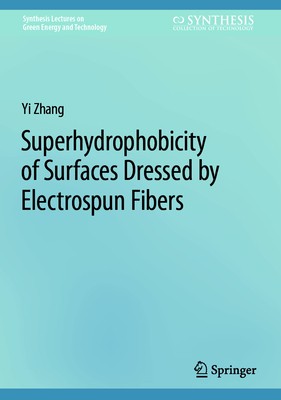
- We will send in 10–14 business days.
- SAVE -10% with code: EXTRA
Superhydrophobicity of Surfaces Dressed by Electrospun Fibers (e-book) (used book) | bookbook.eu
Reviews
Description
This book provides insights into the wetting behavior on fiber-dressed surfaces and guidelines for developing superhydrophobicity based on electrospinning. In developing superhydrophobicity, electrospinning possesses the following advantages over other fabrication techniques. First, the electrospun micro- and nanofibers, which may also featured with secondary fiber morphology, provide sufficient surface roughness for superhydrophobicity. Second, electrospinning is considered an additive manufacturing technique, so the surfaces to be modified are not destroyed for superhydrophobicity. Third, the introduced electrospun structure is featured with high porosity with inter-fiber pores, allowing for a high vapor transmission rate, which is necessary in many applications such as wound dressing, gas sensor.However, books focused on developing superhydrophobicity using electrospinning are rarely found. Electrospinning is only introduced as one section in most superhydrophobicity-related books, and the mechanism of superhydrophobicity by different electrospinning-based methods lacks detailed explanation.
EXTRA 10 % discount with code: EXTRA
The promotion ends in 23d.09:52:07
The discount code is valid when purchasing from 10 €. Discounts do not stack.
- Author: Yi Zhang
- Publisher: Springer
- ISBN-10: 3031555511
- ISBN-13: 9783031555510
- Format: 17.5 x 24.6 x 1.2 cm, kieti viršeliai
- Language: English English
This book provides insights into the wetting behavior on fiber-dressed surfaces and guidelines for developing superhydrophobicity based on electrospinning. In developing superhydrophobicity, electrospinning possesses the following advantages over other fabrication techniques. First, the electrospun micro- and nanofibers, which may also featured with secondary fiber morphology, provide sufficient surface roughness for superhydrophobicity. Second, electrospinning is considered an additive manufacturing technique, so the surfaces to be modified are not destroyed for superhydrophobicity. Third, the introduced electrospun structure is featured with high porosity with inter-fiber pores, allowing for a high vapor transmission rate, which is necessary in many applications such as wound dressing, gas sensor.However, books focused on developing superhydrophobicity using electrospinning are rarely found. Electrospinning is only introduced as one section in most superhydrophobicity-related books, and the mechanism of superhydrophobicity by different electrospinning-based methods lacks detailed explanation.


Reviews